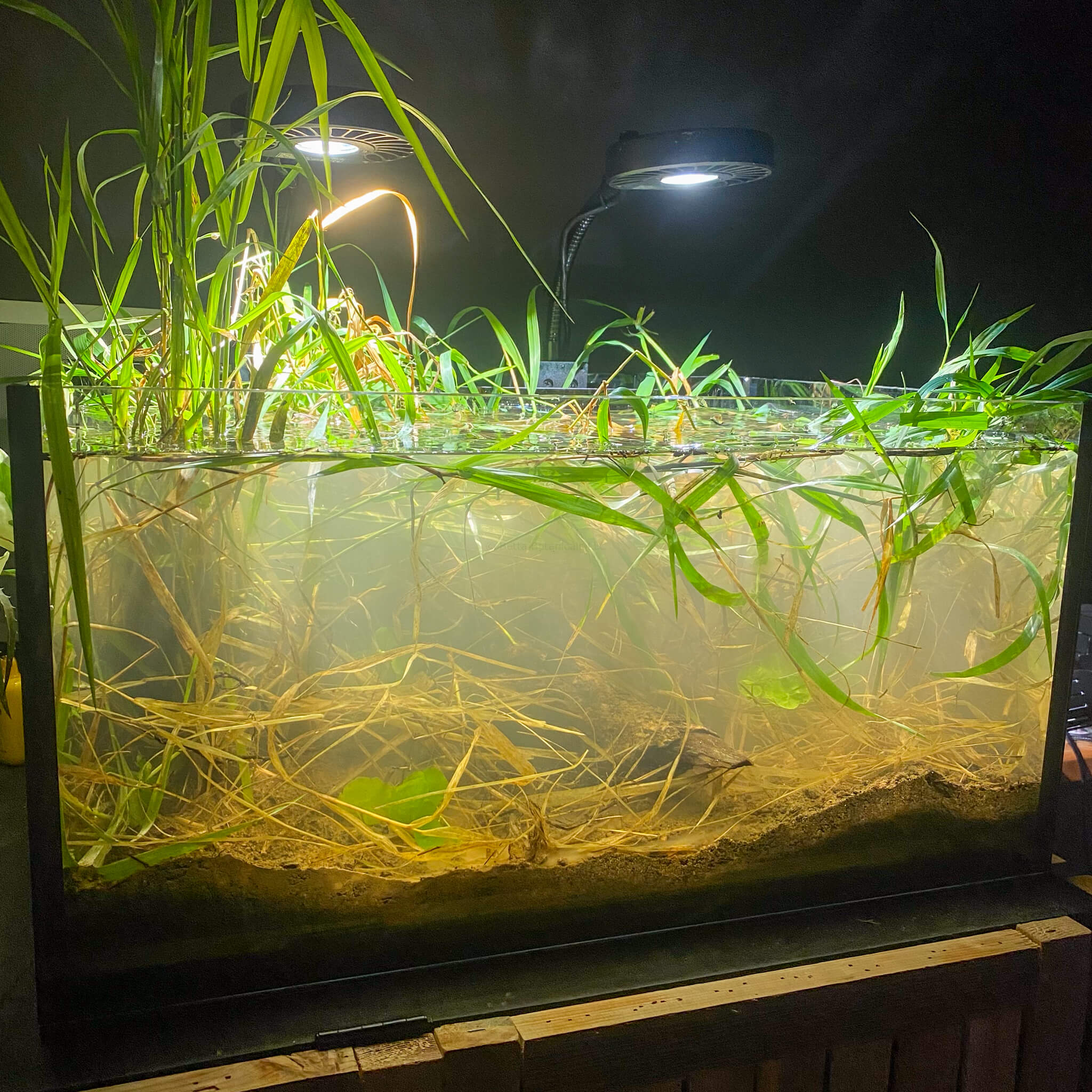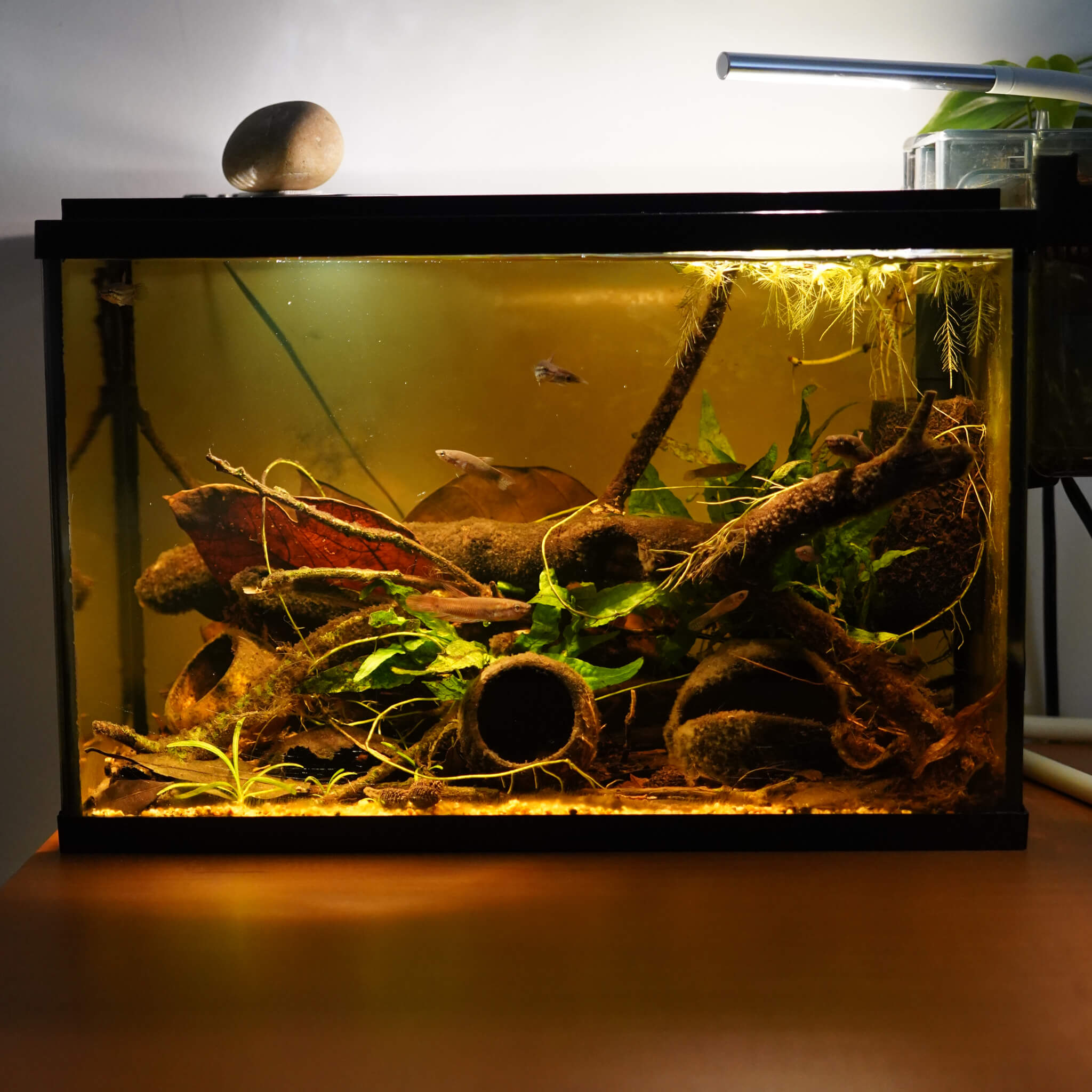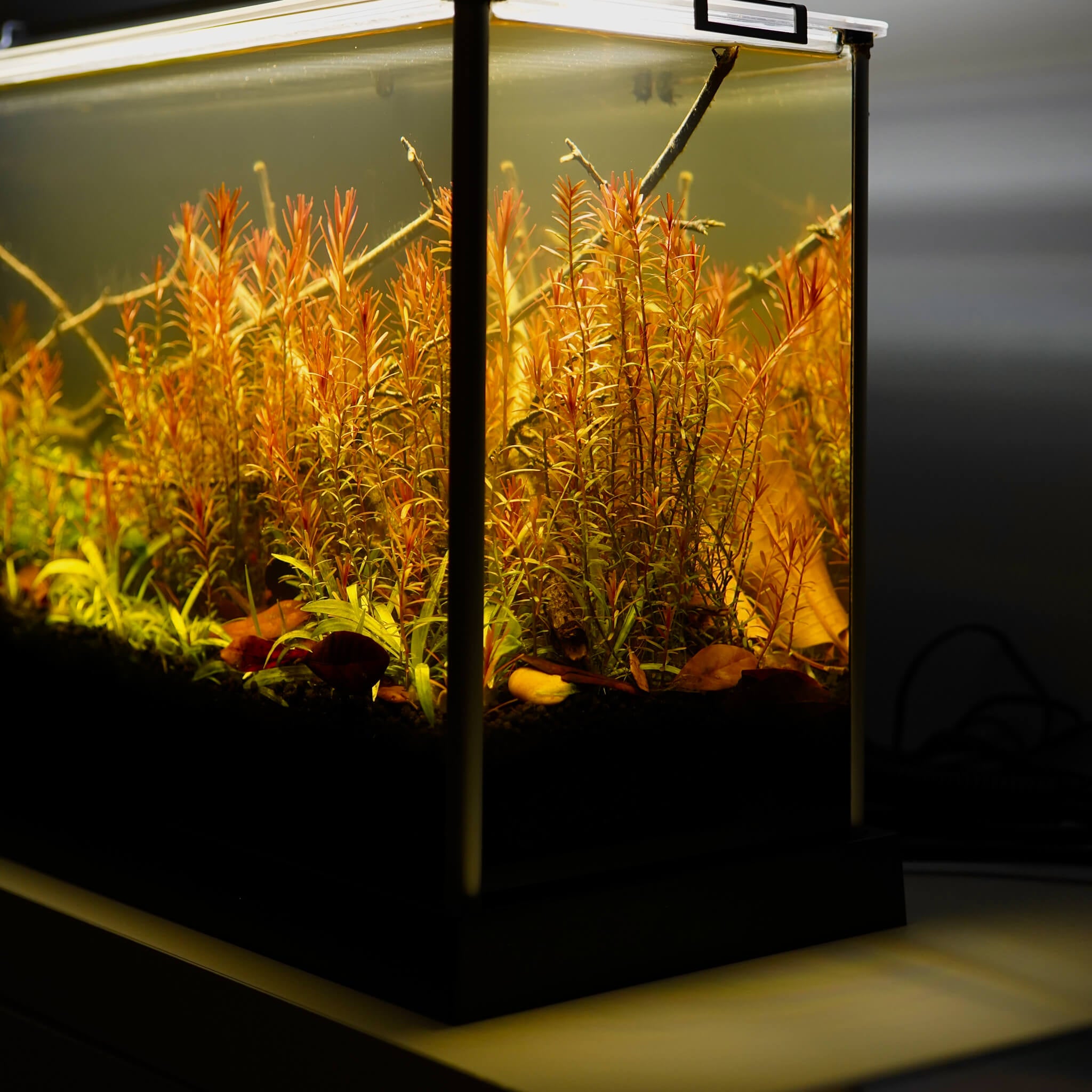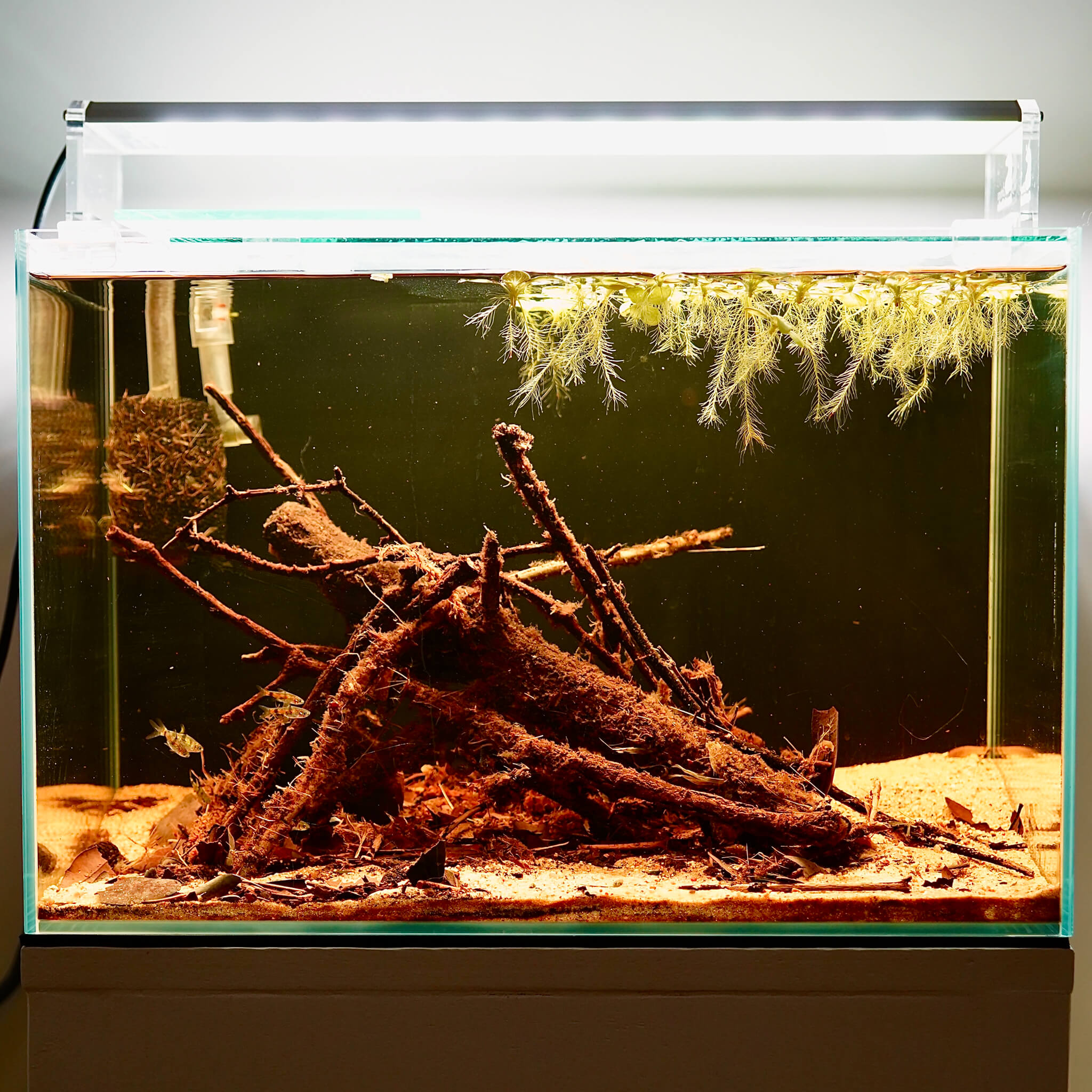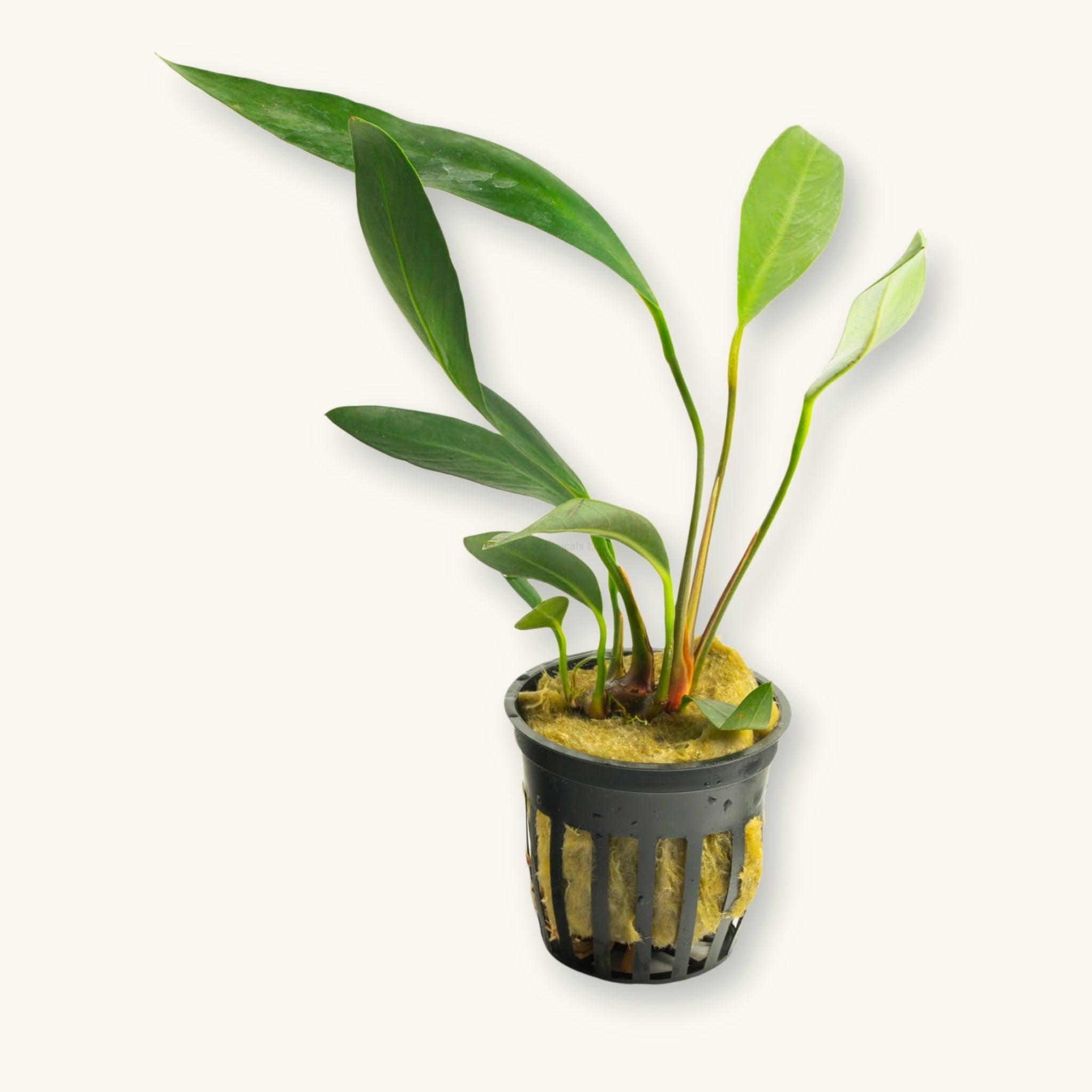
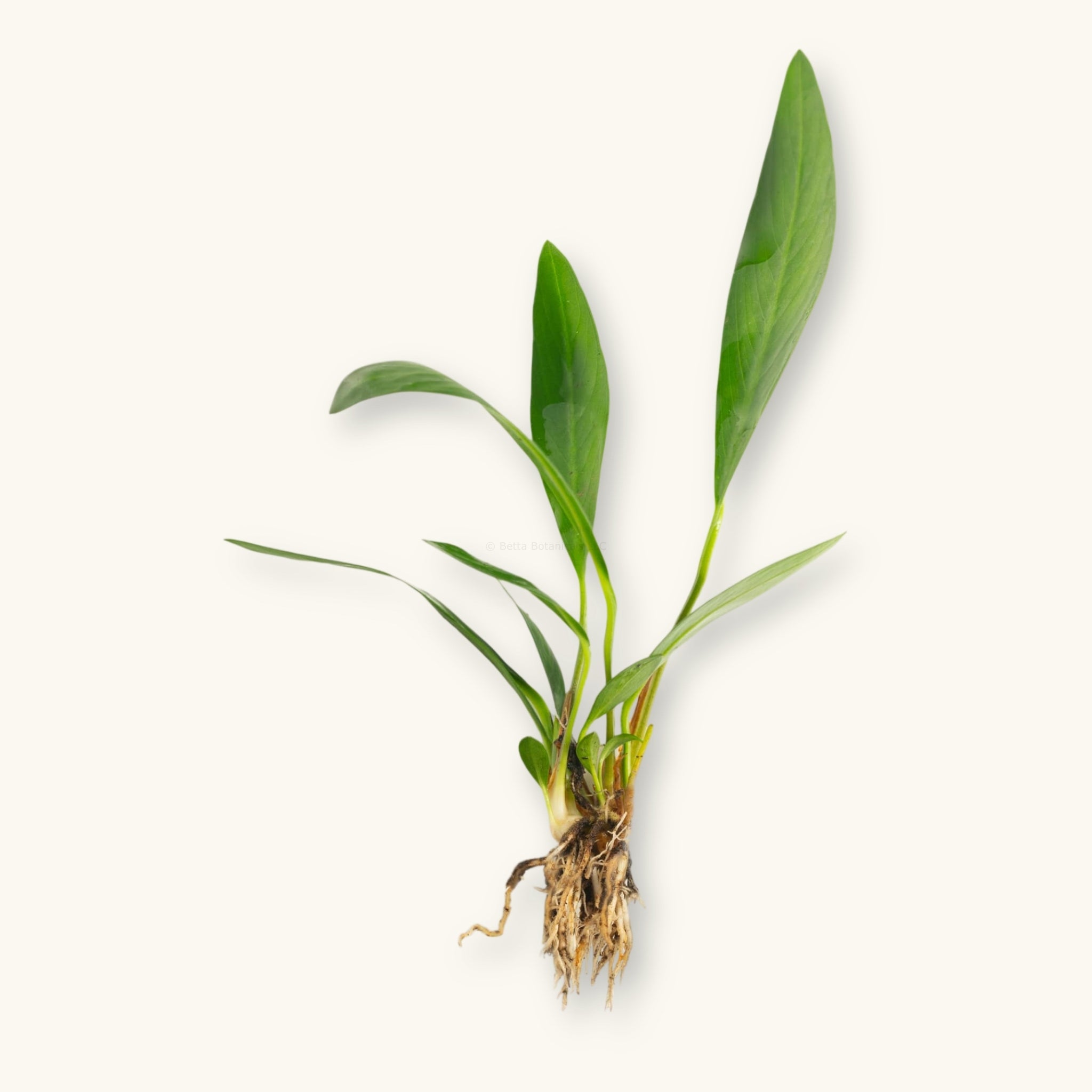
Anubias Afzelii | Anubias heterophylla 'Lanceolata'
Anubias Lanceolata
Scientific Name: Anubias lanceolata, Anubias barteri var. lanceolata, Anubias heterophylla 'Lanceolata'
Common Name: Water Aspidistra, Anubias Afzelii
Anubias Lanceolata has very tall leaves compared to the rest of the Anubias varieties. The Anubias Lanceolata plant grows via a creeping horizontal rhizome that produces vertical leaves. When planting, do not bury the rhizome in your substrate. Only bury the roots, attach to driftwood, or attach to rocks. You can propagate this plant by cutting the rhizome in half and moving the cutting to another area, but please ensure that each cutting contains at least 3 leaves. This will allow both cuttings to keep growing.
Caring for Anubias Lanceolata in Blackwater Aquariums
Care Level: Easy
Light: Low
CO2: Not Needed
Tint Tolerance: Low to High Tannin Levels, but keep in mind that higher levels of tint will decrease photosynthesis rates.
Native Habitat: Africa
All Plants may contain snails or snail eggs. We keep them in all of our tanks for the benefits they provide. Our blackwater aquarium plants are provided by H2OPlants in adherence to their Shipping and DOA Policies. Your curated selection will arrive in their packaging separate from your botanical & merch orders.

Anubias Afzelii | Anubias heterophylla 'Lanceolata'
contrast the tint with greenery
While the aesthetic appeal of tinted waters can be quite attractive to us, the recreation of nature—which includes both submerged and emersed plants—is the end goal. Flora helps to improve water conditions, feeding patterns, spawning displays, and territory building.
Aquatic Plant FAQs
DOA Policy
Please ensure that you add a heat pack or cold pack to your orders if temperatures in your area are above 90°F or below 40°F. Click for more info on our DOA Policy.
Are these plants duckweed and snail free?
All Plants may contain snails or snail eggs, small macroinvertebrates, and duckweed. We keep them in all of our tanks for the benefits they provide. We have experienced the presence of small snails, ostracods, daphnia, and beneficial detritus worms.
Are your plants only for tinted water conditions?
Nope! All of our plants will grow perfectly in untinted aquariums that have CO2 and aquasoils, or low-tech planted aquariums. Our selection, though, is optimized for emersed plant growth and low- to medium-tinted water environments.
What is your aquatic plant shipping schedule?
We’re a small company and ship Tuesdays & Thursdays only. Orders placed Wednesday–Sunday → Ship Tuesday. Orders placed Monday–Tuesday → Ship Thursday
Are your plants just for bettas?
Nope. Our aquatic plants are safe for almost all aquariums, terrariums, vivariums, and paludariums. Many of our plants can be grown emersed in filter compartments, vivariums, or incorporated into wabikua.
What are Tannins?
Tannins are natural compounds released by leaves, seed pods, and bark as they decompose in water. They soften water, gently lower pH, and create the characteristic tea-stained tint found in blackwater habitats. But their role goes far beyond color—tannins fuel beneficial bacteria, fungi, and biofilms, which form the foundation of a healthy ecosystem. They also offer mild antifungal benefits and help reduce stress in fish by replicating the natural conditions they’ve evolved in. At their core, tannins are plant-derived antioxidants that connect your aquarium to the same processes at work in wild flooded forests and streams.




